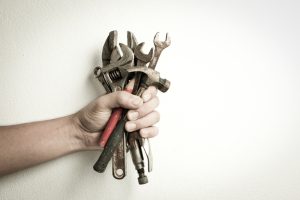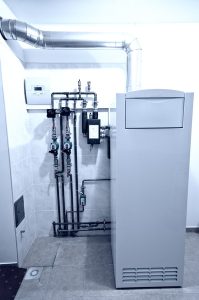Proven and Tested Tips for Handling Emergency Plumbing Repairs
Plumbing emergencies can strike at the worst times, turning a peaceful day into a stressful ordeal. A burst pipe or a severe leak can cause significant water damage if not handled promptly. Knowing how to recognize an emergency and taking immediate steps can save time and prevent costly repairs.
Every homeowner should have a basic understanding of what constitutes a plumbing emergency. Issues like flooding, sewage backups, and no water supply demand urgent attention. Ignoring these can lead to more severe problems, including structural damage and health hazards.
Being prepared with the right tips and tools can make all the difference when facing a plumbing catastrophe. Quick actions can help manage the situation until professional help arrives. Additionally, understanding common repairs and maintaining your plumbing system can reduce the risk of emergencies. This guide will explore practical advice to help you handle plumbing crises with confidence and ease.
Recognizing Plumbing Emergencies
Understanding what qualifies as a plumbing emergency is crucial in preventing further damage to your home. Emergencies typically involve severe issues that can’t wait, such as burst pipes, severe leaks, or water supply failures. These problems can quickly escalate and lead to significant water damage or health risks from mould and mildew.
A burst pipe is a clear emergency, as it can flood your home quickly, damaging floors, walls, and personal belongings. Similarly, sewage backups require immediate attention due to potential health hazards from exposure to waste. When fixtures like toilets or sinks won’t drain at all, this could indicate blockages deep in your plumbing system that need urgent repair.
Ignoring these urgent issues is risky. Letting a small leak go unattended can lead to bigger, costlier repairs in the future. Prolonged exposure to leaks can weaken your home’s structure, create electrical hazards, and promote the growth of mould, which poses health risks. Recognizing these emergencies allows you to act quickly, minimizing both damage and repair costs.
Immediate Actions to Take During a Plumbing Crisis
When faced with a plumbing crisis, taking quick action is essential. These immediate steps can help manage the situation and reduce damage until professional help arrives:
1. Shut Off the Water Supply: Quickly locate and turn off the main water valve to stop the flow of water. This is usually found in the basement or utility room.
2. Turn Off the Water Heater: To prevent damage, turn off the water heater. This protects the unit from overheating or malfunctioning if water levels drop unexpectedly.
3. Address Small Leaks: Use temporary solutions like pipe tape or a bucket to manage small leaks. This helps to minimize water damage and manage the flow.
4. Unclog Drains: If safe to do so, use a plunger to clear clogs in sinks or toilets. Avoid using chemical drain cleaners, as they can harm your pipes and skin.
5. Assess the Situation: Check for other signs of plumbing issues, such as additional leaks or strange noises from pipes. This helps in identifying all areas that may need attention.
Safety should always come first. Ensure electrical appliances in the affected area are unplugged and avoid standing water to prevent electrical shocks. Having basic tools like a wrench, plunger, and pipe tape handy can be incredibly helpful for managing minor emergencies. Implementing these steps ensures that you minimize potential damage and keep your home safe while waiting for a professional plumber.
Common Emergency Repairs and Solutions
Plumbing emergencies often involve some of the most frequent issues homeowners face. Burst pipes, leaks, and sewer backups top the list, each requiring specific solutions to address. Burst pipes, for instance, can occur due to freezing temperatures or high water pressure. Immediate action involves turning off the water supply and using a pipe repair clamp to temporarily seal the leak.
Leaky faucets and fixtures, while not as severe as burst pipes, can still waste significant water and money if left unattended. For minor leaks, tightening connections with a wrench or replacing worn-out washers may do the trick. However, if a leak persists, it’s best to consult a professional plumber to avoid further complications.
Sewer or drain backups are serious issues, often caused by blockages from debris, grease build-up, or tree roots invading the pipes. Using a plunger or a plumber’s snake can clear minor blockages, but persistent or severe clogs require expert attention to ensure the integrity of the plumbing system.
Knowing when to handle a repair yourself and when to call a professional is crucial. For example, temporary fixes are fine for minor issues, but recurring problems or complex repairs should be handled by a professional to prevent additional damage.
Preventive Measures to Reduce Future Emergencies
Taking preventative steps can greatly reduce the likelihood of plumbing emergencies. Regular maintenance and inspections are key to identifying potential issues before they escalate. Start by routinely checking for leaks, especially in areas prone to moisture like under sinks and around toilets. Early detection can save time and money.
Insulating pipes, particularly in colder regions, can prevent them from freezing and bursting during winter months. Wrap outdoor faucets and disconnect hoses when temperatures drop. Frost-free hose bibs are a wise addition for added protection during harsh winters.
Regular plumbing inspections by professionals can identify hidden problems. They can inspect drains and sewers using advanced tools like sewer cameras to detect blockages or damaged pipes. Upgrading older systems, such as replacing cast iron pipes or outdated water heaters, also reduces the risk of future emergencies.
Maintaining a proactive approach not only protects your home but also extends the lifespan of your plumbing system. By investing a little time and effort into regular care and updates, homeowners can enjoy peace of mind and prevent unexpected crises.
Conclusion
Handling a plumbing emergency requires quick thinking, the right tools, and a clear understanding of when to call in professional help. Recognizing a problem early and addressing it swiftly can mitigate damage and lower repair costs. Preventive maintenance should be part of every homeowner’s routine to avoid plumbing crises. If you find yourself overwhelmed by a plumbing issue, don’t hesitate to seek expert assistance.
When plumbing trouble strikes, it’s good to know you have a reliable team ready to help. The Irish Plumber is committed to providing top-notch emergency plumbing repairs and maintenance solutions tailored to fit your needs.
Whether it’s a pesky drip or a full-scale plumbing overhaul, we’re only a call away, ensuring your home remains safe and comfortable. Don’t let plumbing problems disrupt your peace of mind; contact us today for fast, dependable service.



